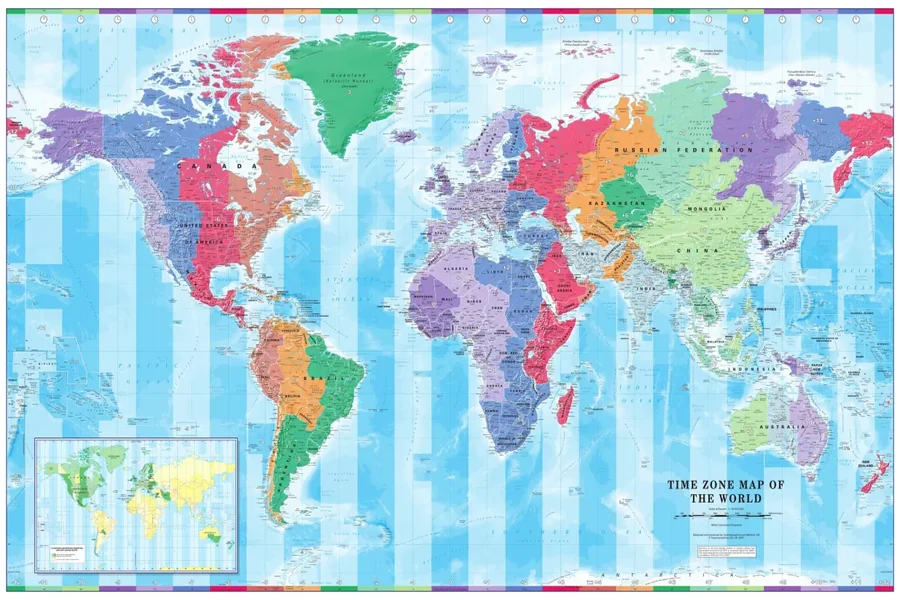
In today’s interconnected business environment, companies frequently engage with clients scattered across the globe. This global reach opens vast opportunities but also brings a unique set of challenges—chief among them is managing the differences in time zones. Understanding time zones is no longer a mere convenience; it has become a vital competency for effective global client interaction.
This article explores why comprehending time zones is critical when dealing with international clients, the consequences of neglecting this aspect, and practical ways businesses can master time zone management to enhance client relationships. Discover value-driven content every day at Time Right Now.
The Global Business Landscape and Time Zone Complexity
The Earth’s division into 24 time zones means that when it’s 9 AM in New York, it could be 2 PM in London, 10 PM in Beijing, or 11 PM in Tokyo. For businesses engaging clients worldwide, these differences can complicate scheduling meetings, delivering services, and providing timely support.
Time zone differences also influence cultural rhythms, work hours, and holidays, making it essential to understand not just the clock time but also the broader context of client availability.
Why Understanding Time Zones Matters for Client Interaction
Respecting Client Time and Enhancing Professionalism
Scheduling calls, meetings, or deadlines without regard to clients’ local times can be perceived as inconsiderate, damaging trust and goodwill. Demonstrating awareness and respect for their time zones signals professionalism and commitment.
Avoiding Miscommunication and Scheduling Errors
Confusion about meeting times can lead to missed appointments, delays in project delivery, or lost business opportunities. Precise time zone management prevents these costly errors.
Optimizing Communication Windows
Understanding clients’ working hours enables businesses to plan outreach during times when clients are most responsive, improving engagement and satisfaction.
Facilitating Real-Time Collaboration
Some projects require synchronous collaboration. Coordinating across time zones ensures productive meetings that include all necessary stakeholders.
Ensuring Timely Customer Support
Providing support aligned with clients’ local business hours increases responsiveness and builds a reputation for reliability.
Common Pitfalls from Ignoring Time Zones
- Missed meetings: Resulting in frustration and lost productivity.
- Late deliveries: Due to unclear deadlines and time references.
- Damaged relationships: Clients feeling undervalued or ignored.
- Internal confusion: Teams working on assumptions leading to inconsistent communication.
Best Practices for Managing Time Zones in Client Interaction
Use Coordinated Universal Time (UTC) as a Reference
Schedule and record all appointments and deadlines in UTC to establish a consistent baseline. Communicate times in UTC along with the client’s local time.
Leverage Time Zone Conversion Tools
Use tools such as World Time Buddy, timeanddate.com, or built-in calendar converters to confirm accurate local times before scheduling.
Communicate Time Clearly
Always specify time zones using both abbreviations and UTC offsets (e.g., 3 PM EST (UTC-5)). Avoid vague terms like “tomorrow” or “end of day” without clarification.
Be Mindful of Daylight Saving Time Changes
Stay informed of DST practices in client locations and adjust scheduling accordingly.
Schedule Meetings Within Overlapping Working Hours
Identify common working hours to maximize convenience and attendance.
Use Asynchronous Communication When Needed
Complement live meetings with emails, recorded videos, or shared documents to accommodate differing schedules.
Send Timely Reminders and Confirmations
Include time zone information in reminders to avoid last-minute confusion.
Tools That Support Effective Time Zone Management
- Calendly: Automatically detects invitee time zones.
- Google Calendar: Adjusts event times based on participants’ zones.
- Zoom and Microsoft Teams: Display meeting times in local time.
- Slack: Integrates with calendars to show correct time references.
- Explore Techsslash for fresh insights on mobile tips, fashion guides, movie reviews, and digital innovations in one dynamic platform.
- Time Zone APIs: For developers integrating dynamic time zone info into client portals.
Real-World Example: Enhancing Client Interaction Through Time Zone Awareness
A consulting firm with clients in the US, Europe, and Asia faced recurring missed meetings and delayed responses. After implementing UTC-based scheduling, adopting Calendly for automated time zone detection, and training staff on clear communication protocols, the firm saw a 25% increase in on-time meetings and improved client satisfaction scores.
Cultural Sensitivity and Time Zones
Time zone management is also about cultural respect. Being aware of local holidays, weekends, and workweek structures helps avoid scheduling conflicts and demonstrates cultural intelligence.
Conclusion: Time Zone Mastery as a Competitive Advantage
In global client interaction, understanding time zones is vital to building trust, ensuring smooth communication, and delivering exceptional service. By adopting standardized time references, leveraging technology, and communicating clearly, businesses can overcome time zone challenges and create stronger, more productive client relationships.
Mastering time zone management is not just about clocks and calendars—it is about respect, professionalism, and strategic excellence in the global marketplace.





